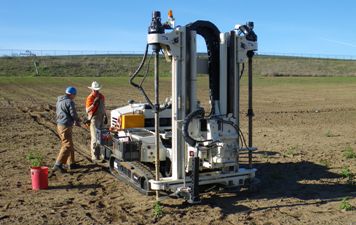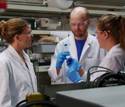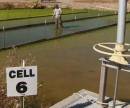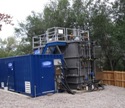New NSF Engineering Research Center Plans to Transform Urban Water Systems

ERC researchers will study the geophysical and bio-geochemical processes affecting groundwater.
July 20, 2011
The National Science Foundation (NSF) announces an award to Stanford University and its partners to establish a new NSF Engineering Research Center (ERC). The ERC will develop interdisciplinary research and education programs that address the intersection of people, water, and the environment, and that provide the foundation for new industries through innovation. NSF will invest $18.5 million in the Center over the next five years.
The NSF ERC for Re-inventing America's Urban Water Infrastructure aims to create water systems that will require far fewer resources while continuing to meet the needs of urban users and improving the quality of aquatic ecosystems. With new knowledge and technological advances, the ERC will design new strategies for more sustainable solutions to urban water challenges.
The Center will focus its research on distributed water treatment systems, integrated natural water systems, and tools that incorporate economic, environmental, and social factors into decisions about water. The new possibilities for water/wastewater treatment and distribution will allow communities to increase the efficiency of water systems and usage, while protecting natural water resources.
The NSF ERC will be based at Stanford University, in partnership with the Colorado School of Mines, New Mexico State University, and the University of California, Berkeley. Researchers at the Nanyang Technological University in Singapore, the Swiss Federal Institute of Aquatic Science and Technology, and the University of New South Wales in Australia will contribute additional expertise and international perspectives.
The involvement of 22 industry partners — including multinational corporations, utilities, and start-up firms — will spur innovation and provide university students with first-hand experience in entrepreneurship. The ERC will also collaborate with complementary research centers and organizations specializing in technology transfer to stimulate innovation based on its research.
Since 1985, the ERC program has fostered broad-based research and education collaborations to focus on creating technological breakthroughs for new products and services and on preparing U.S. engineering graduates to successfully participate in the global economy. The centers launched this summer, as part of the third generation of NSF ERCs, place increased emphasis on innovation and entrepreneurship, partnerships with small research firms, and international collaboration and cultural exchange.
"The Gen-3 ERCs are designed to speed the process of transitioning knowledge into innovation and to provide young engineers with experience in research and entrepreneurship, strengthening their role as innovation leaders in the global economy," said Lynn Preston, the leader of the ERC Program. "Because they build on the rich understanding we gained from two previous generations of ERCs, we expect these new centers to make even more significant impacts on the competitiveness of U.S. industry."
-Cecile J. Gonzalez, NSF, cjgonzal@nsf.gov-
Media Contacts
Joshua A. Chamot, NSF, (703) 292-7730, jchamot@nsf.gov
Andrew Myers, Stanford University, (650) 736-2245, admyers@stanford.edu
Program Contacts
Lynn Preston, NSF, (703) 292-5358, lpreston@nsf.gov
Paul Bishop, NSF, (703) 292-2161, pbishop@nsf.gov
Principal Investigator
Richard Luthy, Stanford University, (650) 723-3921, luthy@stanford.edu
Related Websites
NSF ERC website: http://www.erc-assoc.org
NSF ERC for Re-inventing America's Urban Water Infrastructure website: http://www.UrbanWaterERC.org
Stanford press release: http://news.stanford.edu/news/2011/july/urban-water-infrastructure-072011.html
The U.S. National Science Foundation propels the nation forward by advancing fundamental research in all fields of science and engineering. NSF supports research and people by providing facilities, instruments and funding to support their ingenuity and sustain the U.S. as a global leader in research and innovation. With a fiscal year 2023 budget of $9.5 billion, NSF funds reach all 50 states through grants to nearly 2,000 colleges, universities and institutions. Each year, NSF receives more than 40,000 competitive proposals and makes about 11,000 new awards. Those awards include support for cooperative research with industry, Arctic and Antarctic research and operations, and U.S. participation in international scientific efforts.
Connect with us online
NSF website: nsf.gov
NSF News: nsf.gov/news
For News Media: nsf.gov/news/newsroom
Statistics: nsf.gov/statistics/
Awards database: nsf.gov/awardsearch/
Follow us on social
Twitter: twitter.com/NSF
Facebook: facebook.com/US.NSF
Instagram: instagram.com/nsfgov





